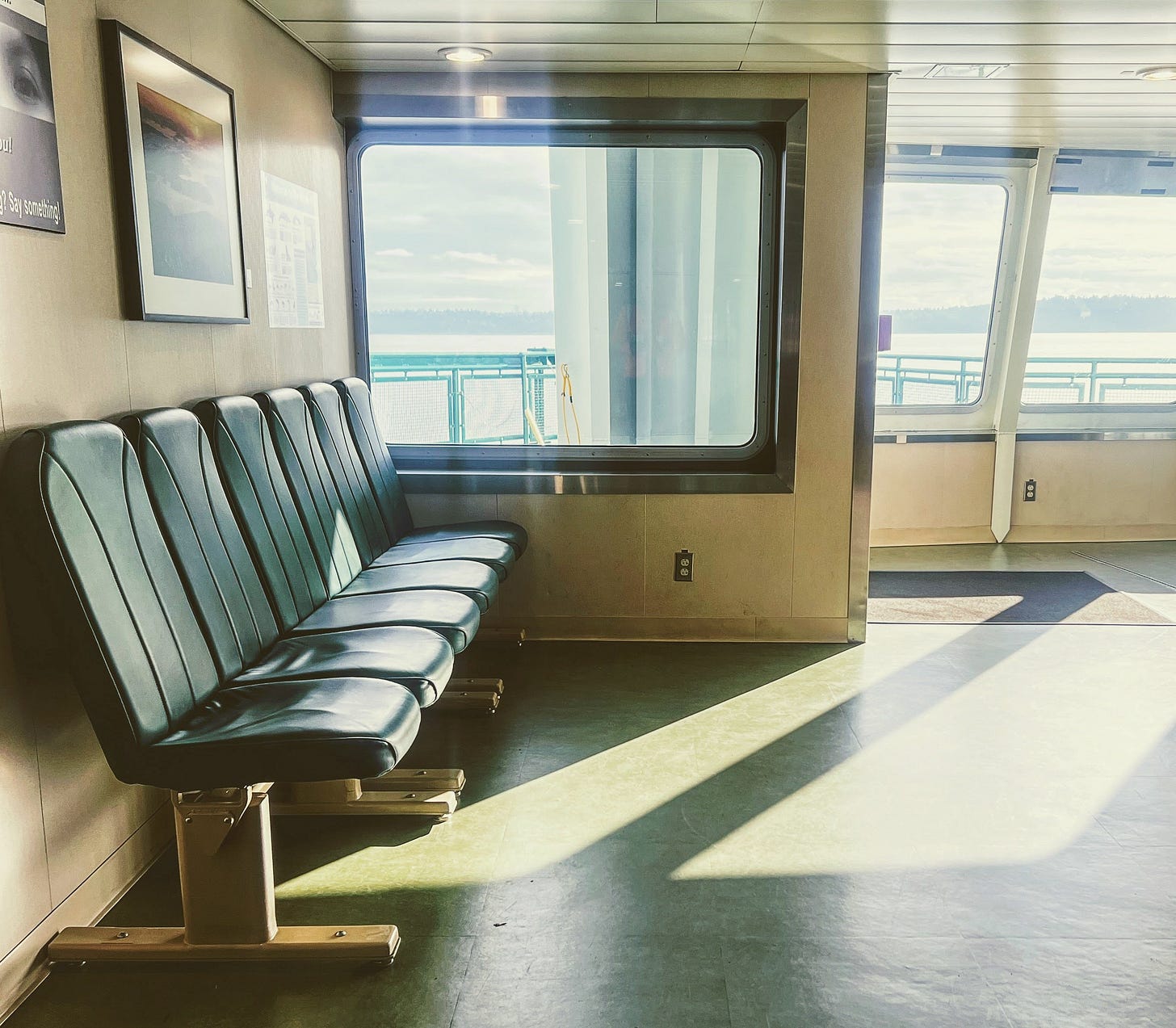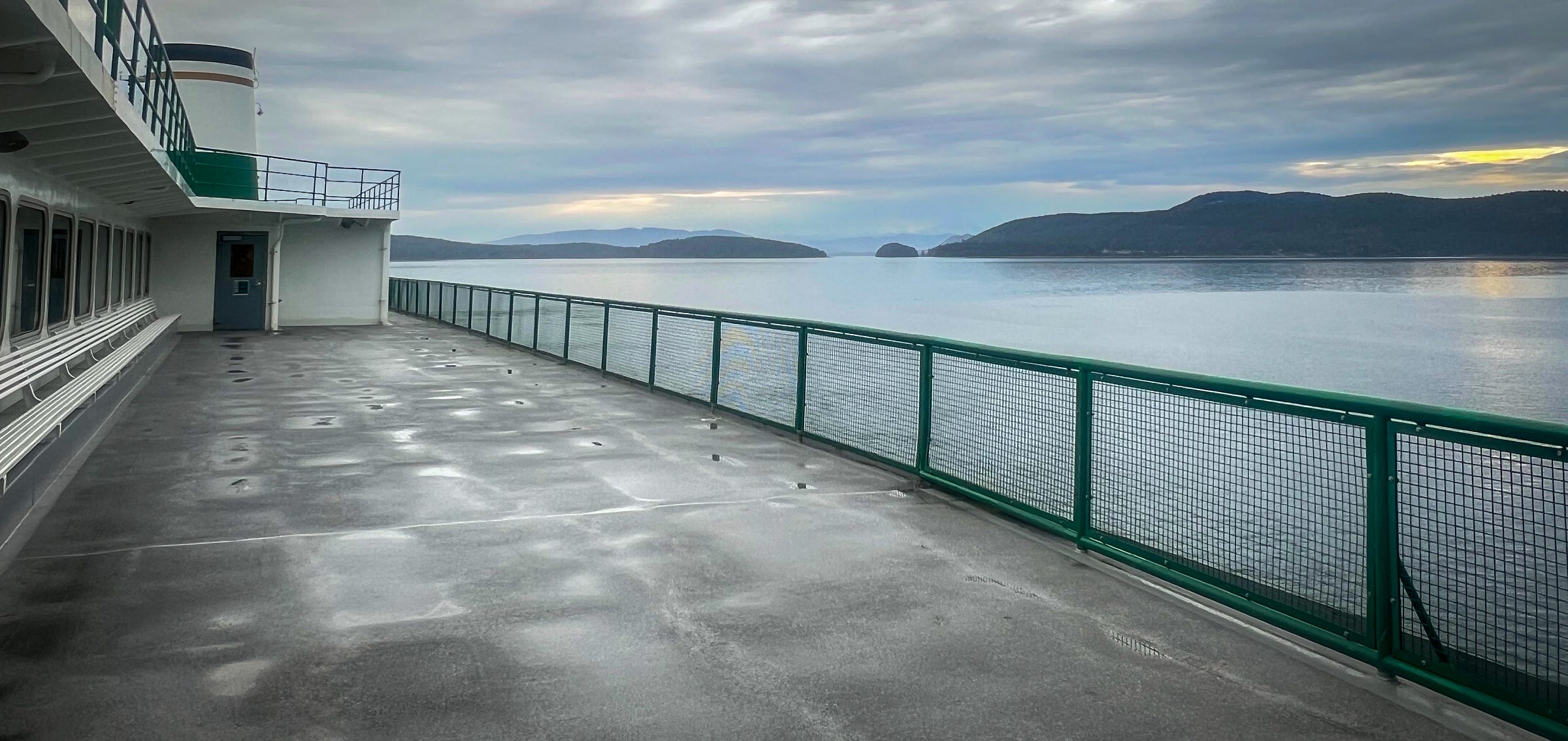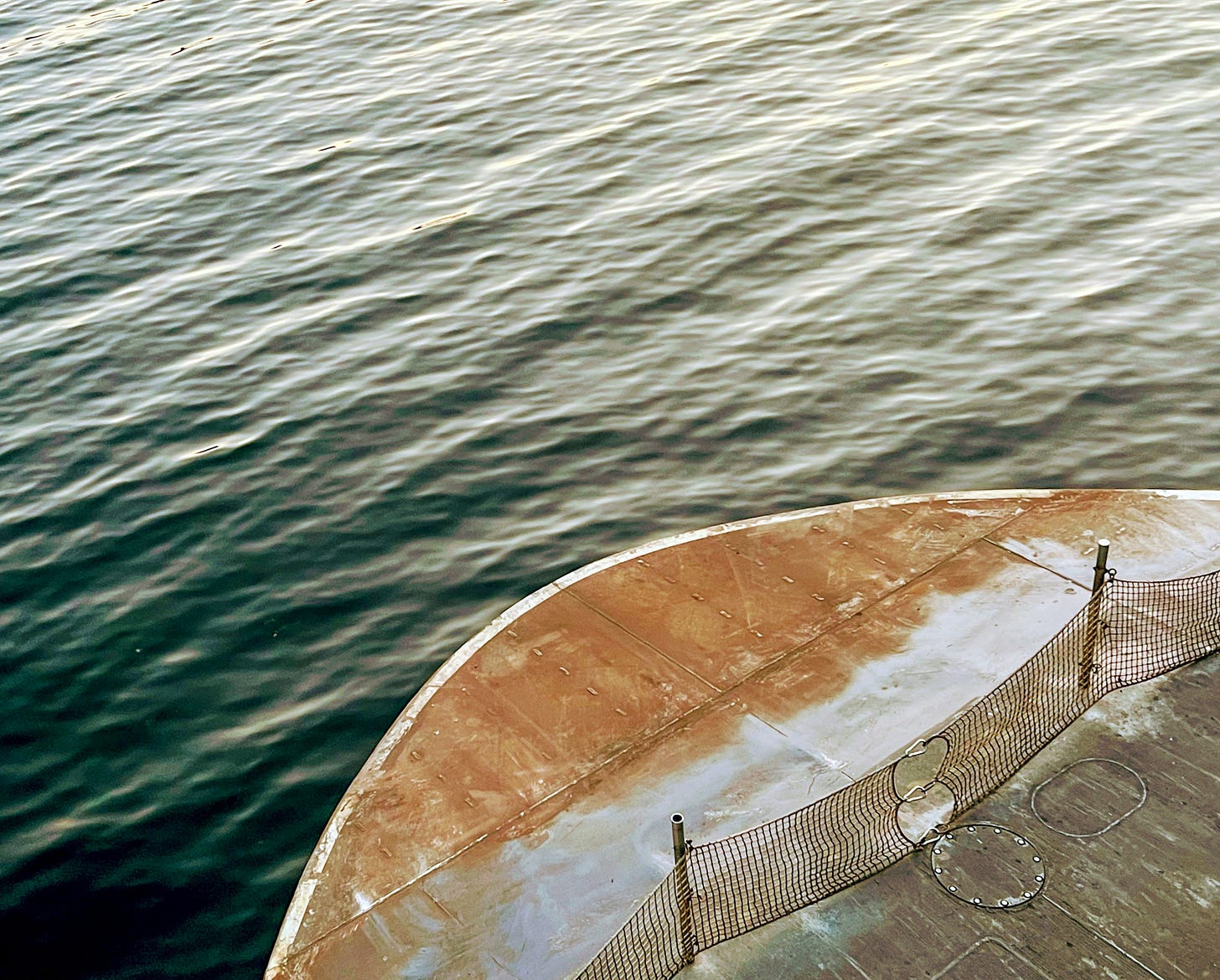Pathway to Pilothouse, Column 2: Finding Rhythm
Erica Lichty reflects on beginning her licensing journey anew with Washington State Ferries, balancing parenthood, and the path to pilotage.
Pathway to the Pilothouse is a monthly column by author and mariner Erica Lichty, chronicling her journey toward becoming a captain with Washington State Ferries.
Each installment offers a candid look at the realities of maritime training—the technical challenges, the strain it places on daily life, and the unexpected sense of community that emerges among those working on deck.
Erica’s perspective is rare: fewer than 3 percent of Washington State ferry captains identify as women+. Through her writing, she sheds light on what it means to enter a profession shaped by tradition—and what it takes to create space within it, not just for herself, but for those who follow.
This is the second edition of Pathway to Pilothouse. If you missed the first column, you can read it here.
“It does not matter how slowly you go, as long as you do not stop.” – Confucius
Although I’ll be dipping back from time to time to give a fuller picture of who I am—something which I believe is critical—this month’s piece focuses more on the whys, wheres, and whats of the past few weeks.
When we left off, I had just begun the three-week new hire orientation for deck crew with Washington State Ferries (WSF). New hires start as OS (Ordinary Seaman), the most basic United States Coast Guard credentialed deck rating. At this level, you begin accumulating sea time, which is crucial for upgrading your license.
That upgrade not only increases your responsibilities but also your pay.
My cohort was a cross-section of the Pacific Northwest—fifteen of us selected from roughly 300 applicants. While most started at the Ordinary Seaman level, a certain few had advanced United States Coast Guard credentials.
After graduating from Cal Maritime, I earned a degree in Marine Transportation and received a Third Mate Offshore Unlimited license, which includes an AB (Able-Bodied Seaman) Unlimited endorsement. On the ferries, that level of licensure would typically place you in the pilothouse.
But no matter your background, everyone has to put in their time.

The hard truth is, I didn’t think I’d return to the industry. Instead of placing my license into continuity, I let it lapse completely.
The silver lining?
I don’t need recency—I already have the required sea time. But I do need to retest for my Inland Mate Any Gross Tons license. That’s my current mission over the next few months. Once I regain my Able-Bodied Seaman endorsement, I’ll have access to more job opportunities on the ferries. And once I’ve re-earned my Mate’s license, I’ll be eligible for the pilotage program—more on that shortly.
Three weeks of training were more exhausting than I anticipated. Some folks commuted from as far as Friday Harbor—the main town on a remote island near the Canadian border. The State of Washington graciously housed them in hotels.
Others came from completely different walks of life: the Postal Service, small business ownership, tall ships, even a garden center. A few had ferry experience, but mostly on the shore side—working ticket booths, for example.
We spent our days at WSF’s downtown offices onboarding, reviewing everything from union rights to health insurance. On other days, we were in Basic Safety Training (BST), fulfilling mandatory mariner requirements: firefighting, personal survival, safety at sea, and CPR. These certifications are essential for anyone working aboard vessels that operate beyond U.S. territorial waters.

Most importantly—we bonded.
Orientation ends, and you’re released into on-call status. It’s nerve-wracking. You don’t know what’s coming, but at least you’ve gained a community.
Why am I writing this column? Why tell this story?
My hope is that these writings bring a sense of connection to those who’ve lived these stories—and to those who haven’t but are drawn to the sea just the same. At 47, having already worked in the industry, run a business, and dedicated years to maritime advocacy, this isn’t just a new chapter—it’s a continuation of curiosity and growth. It’s a rediscovery of purpose.
Like SEASTR+ (see the previous column and SEASTR+’s explanation there), which I’ve always described as something that can’t confine or define itself—always evolving—so too is this journey.
How can someone like me succeed here?
What can I contribute to this fleet?
I’m not here to break or recreate the system. I’m here to show up, grow within it, and find belonging in it. Find “myself” in it.
All 15 of us in that cohort were there for a reason. Some had never worked on boats and might not even say they love the water, but they were drawn to it nonetheless. Some may leave before our six-month probation is up; others might become captains. In the meantime, we share a text thread, exchange glances across decks, and embrace whenever we cross paths.
And now, back to the Pilotage Program—a powerful opportunity.
For someone like me—a single parent living in a location that's not ideal for deck work—it’s a lifeline. WSF is exploring ways to remove the traditional financial and logistical barriers to becoming a first-class pilot. If accepted into the program, mariners receive a base salary while they "ride" ferries, log trips, study routes, and master charts—all culminating in a rigorous United States Coast Guard exam.
You can pursue this on your own dime and time, but this program levels the playing field.
My immediate goal is to regain my Mate’s license and apply for pilotage this fall—with hopes of beginning training this winter.
Being a present parent and partner—attending soccer practices, managing groceries, mental health, physical health, and bills—while being on call and reporting to a ferry terminal at 3:20 AM for a 10-hour shift, not knowing if I’ll work a graveyard shift the next day—there’s no real rhythm yet.
Right now, the only steady beat is that of my heart. But that’s enough.
Because if there’s one thing I know for sure, it’s that we humans find order in chaos.
Rhythm will come.
I’m looking forward to sharing more soon, including my first watch and the remarkable individuals I’ve met out on the water.
— Erica Lichty








